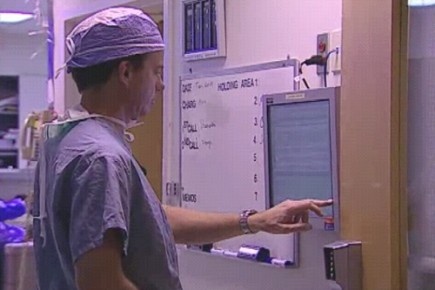Share

Last year, I made my first contribution to this blog. It was on the matter of business development and sought to define what it is "BD" people do. In that intervening year, I have (as one of my other blog posts attests) been taking "Great Courses." One of these was "Grand Rounds." In this course, the lecturer—a physician—went through the process by which a doctor diagnoses problems in patients. It struck me immediately that this problem-solving process is very similar to the BD process.
Many of the cases described in the course occur in the "ED"; the emergency department. (Btw: that’s what it is called—not "ER," which is only the name of a TV show). In the ED the "EP" (emergency physician) follows this procedure:
- Hears the patient’s chief complaint; this is not actually the problem, but a description of how the problem affects the patient.
- Gathers the “HPI” (history of the present illness). When did the problem start, what affects it? In short, this is a deep dive into the complaint.
- Undertakes a physical examination. This is where the EP does his or her own cursory evaluation of the patient—a quick look for any obvious indications of problems (and a way to prioritize issues needing immediate attention).
- Makes a differential diagnosis (anyone who has watched an episode of “House” will recognize this step). Here, the EP lists potential underlying causes (this is the "real" problem) for the chief complaint and systematically looks for correlation to potential diagnoses in the HPI and physical exam.
- Confirms the diagnosis. Here, the EP may order lab tests (blood work, X-rays, etc.) to confirm his or her “best fit” diagnosis.
- Treats. Upon successful diagnosis confirmation, a course of treatment is suggested that is focused on eliminating the chief complaint.
OK: So that’s really rigorous, and I wouldn’t suggest that the BD process follows these steps exactly (for one thing, we deal with things, not people, and things are considerably simpler and more deterministic than humans are). What does resonate, however, is the need to listen to the customer (the chief complaint), understand the details of the present problem (the HPI), where possible gather first-hand information (the physical exam), offer potential solutions (the differential diagnosis), see how well you understand (tests in a lab setting) and finally offer a workable solution (treatment).
Throughout this process, it’s easy to see that the EP must first look to the patient for information and not decide on the diagnosis without getting the full picture. An early diagnosis, based on “I’ve seen this before” is likely to be wrong.
So therein lies the lesson for developing business;
- Listen to the customer and gather meaningful information
- Diagnose the problem underlying the individual "complaint," fitting possible diagnoses to the information (without prejudice of forethought)
- Test how well the information fits your diagnosis of the problem
- Offer a workable solution to the problem
Like the EPs, BD folks never work alone: technicians, engineers, product development and sales all have a role in problem solving, and, as with EPs, it’s the team that solves the problem. This is the GE way.

